Introduction
As part of our special series on social media and investing, we take a look at the professional social network, LinkedIn.
What is LinkedIn
LinkedIn (NYSE:LNKD) was launched in 2003 and is a social networking website for professionals. As of January 2013 the site boasts more than 200 million users in more than 200 countries and territories.
LinkedIn is an excellent tool for fostering business relationships and allows you to find jobs, people and business opportunities. The network allows you to build a profile, upload your resume, keep a list of people you are connected to (called “connections”) and follow companies for updates.
LinkedIn also allows you to join groups. The majority of the largest groups on LinkedIn are employment related with career and professional issues being the range of topics discussed. There are also academic and corporate alumni groups, small-business groups, and area of expertise-related groups such as groups that focus on social media, or print production.
It is in the “groups” section of LinkedIn that our experiment begins.
The Experiment
We started this experiment in the search field of LinkedIn and changed the filter from “people” to “groups”. We then started using investing related keywords to see what we could find.
LinkedIn’s search function returns results in all of the filters that have results for the keyword including “groups”, “companies” and “people”. We limited our search to just groups because we are looking for investing information and education.
We conducted several searches. They were:
- Stock trading
- Invest
- Investing
- Trading
- Stock market
- Forex
- ETF
Don’t feel limited by the keywords we chose above. Treat the search function on LinkedIn the same way you would use Google.
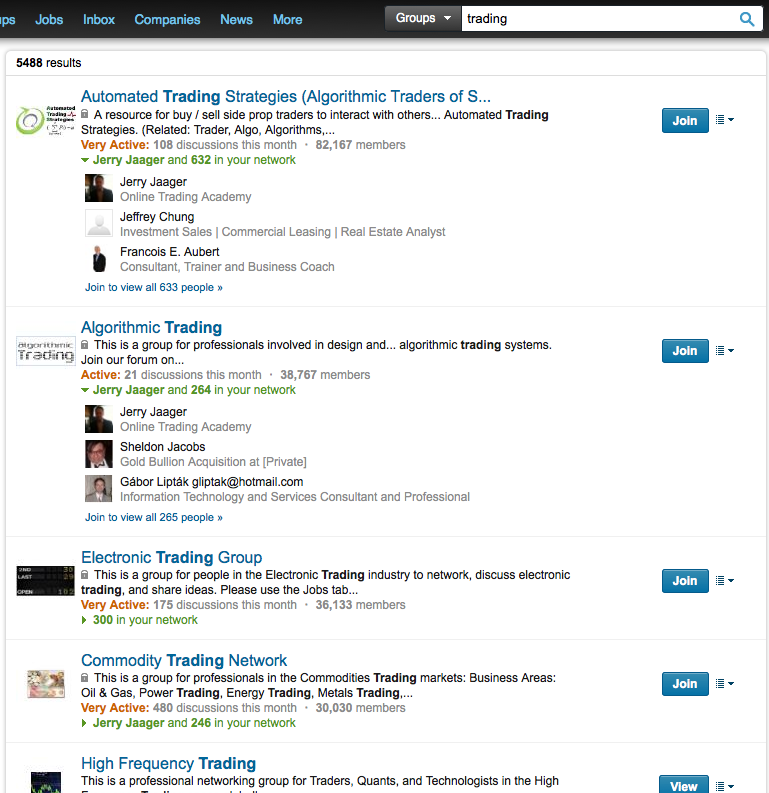
The shortlist of search results below are just the tip of the iceberg. There are thousands of groups on LinkedIn related to trading, stock markets and investments and hundreds of conversations that are taking place at any given time that you can participate in.
Here are some of the groups we discovered:
We decided to examine one of the groups in more detail and so analyzed the Commodity Trading Network. This group was established on March 24, 2008 and at time of this writing had 30,029 members. It is self-described as “a group for professionals in the Commodities Trading markets: Business Areas: Oil & Gas, Power Trading, Energy Trading, Metals Trading, Emissions, Coal Trading, Freight Trading, Risk Management, ETRM.
To maintain a pool of relevant industry professionals, requests to join will only be accepted from LinkedIn members who possess a genuine interest and/or background in Commodity markets.”
My request to join took 3 days to process before I was approved. Upon entering the group for the first time as a member, I quickly realized that the discussions were not only about commodity stock trading. In fact the discussions in the group can be organized into three general categories:
- Commodities investing and trading
- Buying and selling of the commodities themselves
- Job opportunities and listings
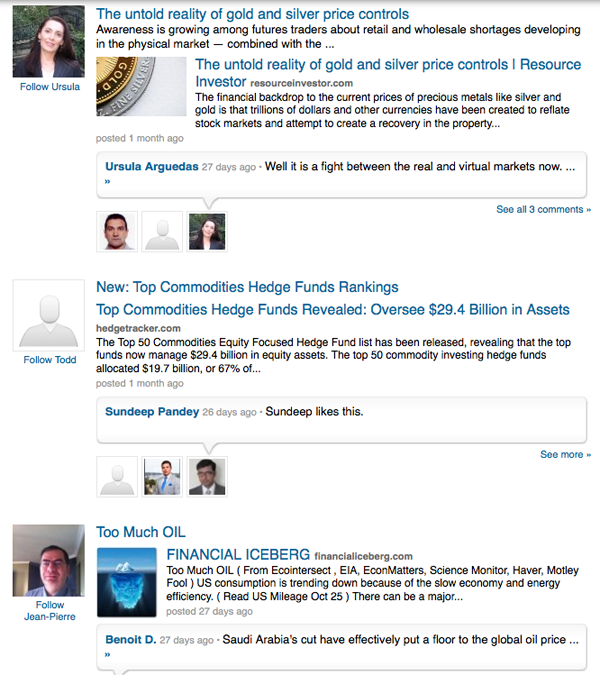
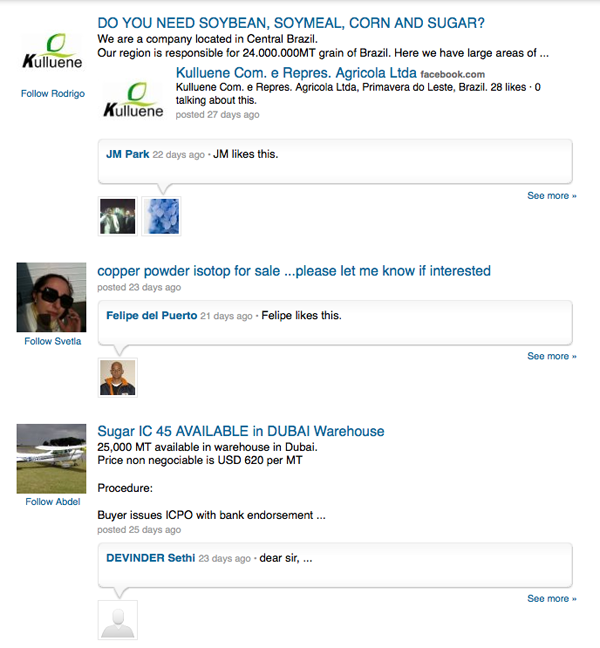
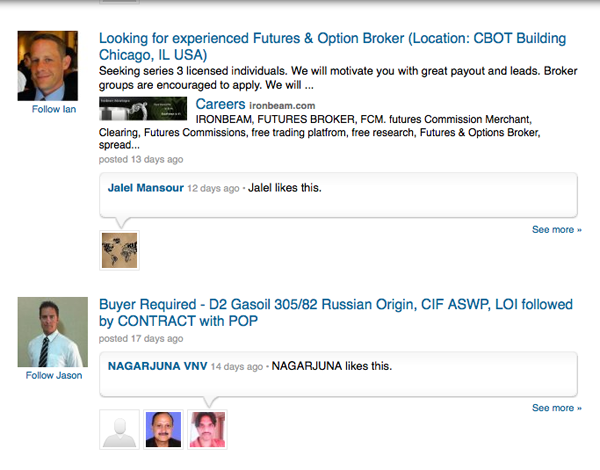
Discussions include opinions, links to outside sources such as company web pages, as well as news articles. Members also have the ability to comment or “like” other member’s postings.
One cool thing that LinkedIn allows users to do is find statistics about a group. For example these are the stats for Commodities Trading Network.
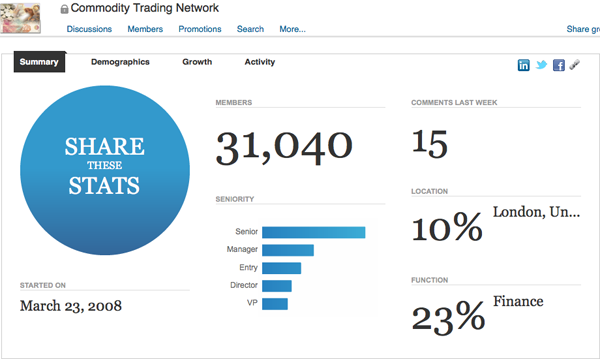
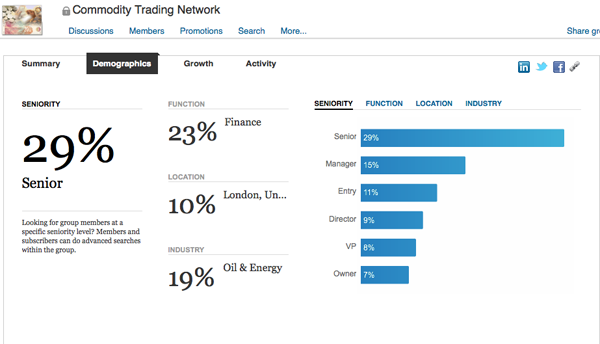
There are some things you should keep in mind as you explore trading and investing related groups on LinkedIn.
First, many groups require that you join before you can see their discussions and some groups require the group administrator (often the person who started the group) to approve your membership before participating. As was the case in our experiment, approval can take some time or, for whatever reason, it may not come at all.
The second, and most important thing to keep in mind, is that like all discussions around investing and trading, the discussions taking place on LinkedIn are just opinions and they should be consumed with caution. Be careful of promotional postings on LinkedIn related to investing in a certain stock or commodity and take everything you hear with a grain of salt.
Conclusion
LinkedIn is a fantastic resource for making professional connections and exploring topics around professional and career related issues. Surprisingly, it is also a great resource for participating in conversations around trading and investing. Be careful whose opinions you take into consideration and contribute your insights and opinions back into the community to make it stronger.
Sources
http://en.wikipedia.org/wiki/LinkedIn
http://www.linkedin.com

 This year’s
This year’s 









